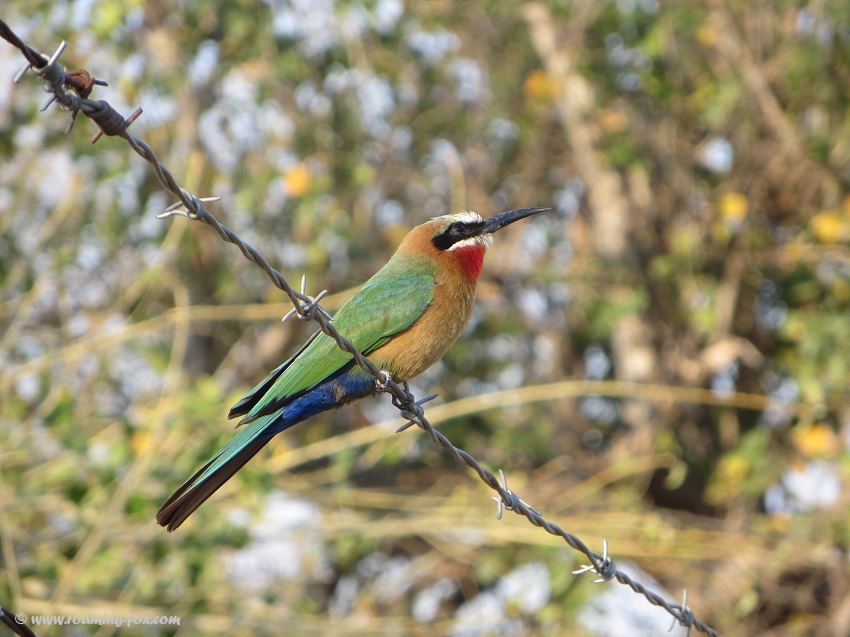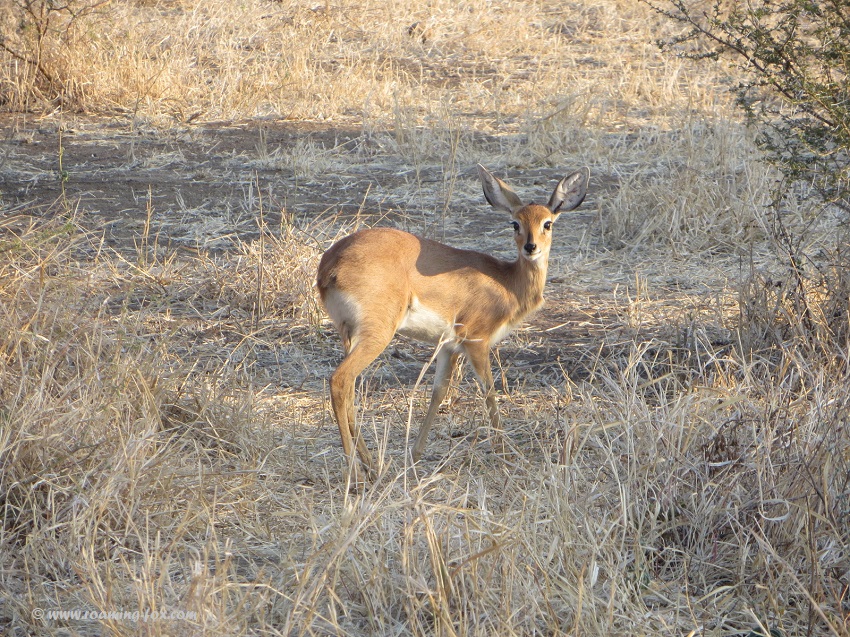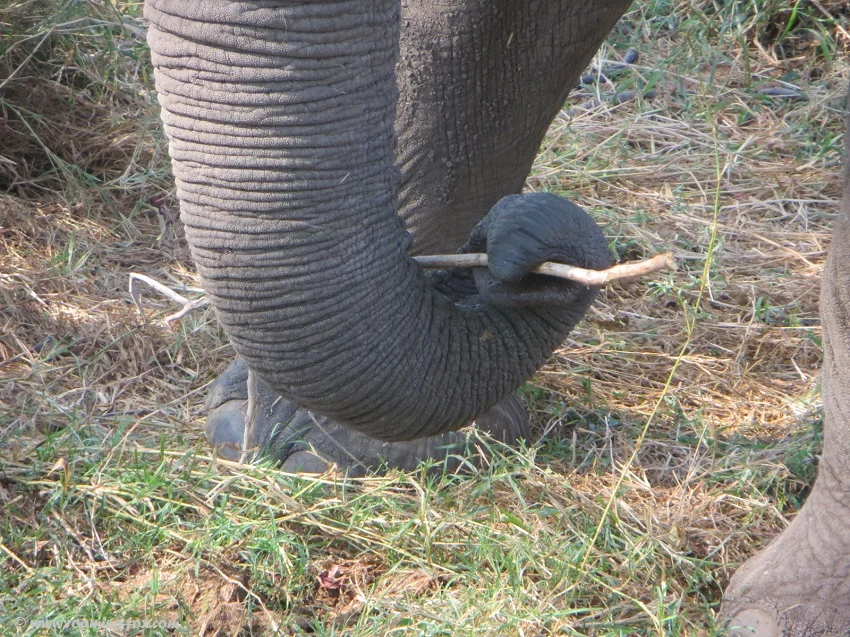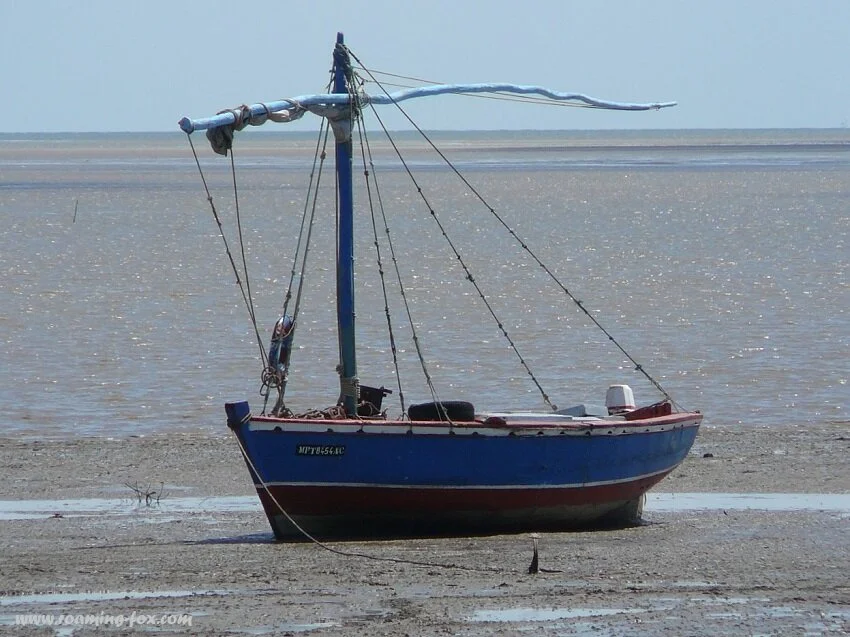Camping in the ancient African kingdom of Mapungubwe
Vhembe - Limpopo - South Africa
Camping at Mapungubwe National Park
World Heritage site of Historical significance and an iron age farmland
Giant baobab in Mapungubwe
Golden rhinoceros Mapungubwe Unesco World Heritage Site
Mapungubwe is known for its historical significance where artefacts of a golden rhinoceros and other symbols of royal power were discovered. Anklets, bracelets, beads, ornaments, a headdress and wooden sceptre and bowl tacked with gold foil indicated that it was an ancient African Kingdom.
It is also a South African National Parks transfrontier conservation area.
In 2014 we went to see for ourselves what it was like as it is not as renowned as many of the other national parks.
Elephant of Mapungubwe
Interpretive centre
13 Tips for Mapungubwe National Park
1. The park is broken up into two areas, a west side and an east side. On the west side you will find Mazhou Camping site, Limpopo tented camp and Tshugulu Lodge. On the east side, the main national park, you have Leokwe Cottages and Vhembe Wilderness Camp.
Between the two areas is a gravel road through a mixture of conservation area, farmland and mining. Part of this road was washed away when we were there. The other route is a tar road that rings the southern side of the park.
If you are staying in accommodation on the east side, you check in at the main gate and drive to your designated area.
If you are camping at Mazhou like we did, or the Limpopo tented camp on the west side, you will be required to check in at the main gate on the east side before you drive to the west side which would take approximately half an hour. When we were in the park in 2014 the gravel road and bridge had washed away in a section. My advice would be to drive the tar road unless you were certain that you could drive that route. Please check with SANPARKS for the gate times and allow for traveling time.
2. There is no fuel for sale at the park. The nearest towns to buy fuel is Alldays or Mussina, both approximately 70 to 90 kilometres from the park. Make sure you have enough for the duration of your stay and to get back to the closest town.
3. We were warned about monkeys being a problem at Mazhou and indeed they were. Although we kept our food secured in the trailer, we left our kettle, fridges and a plastic ammo box containing our crockery, cutlery and other kitchen equipment outside. After a game drive we came back to our campsite to a heap of scattered items, luckily nothing edible. They had even shredded our scouring pad!
Fortunately we had locked our fridges and secured them with strong rubber straps, so they couldn’t get inside. It might sound like we went overboard, but at one of our neighbouring campsites they had ransacked everything and even eaten their onions.
Giraffe sitting under a tree next to the road inside the park
4. Within the park all the roads are gravel. Most of the roads are easy to drive, except for a few 4x4 eco-trails. In some areas, although not many, there are small sections of soft sand. It is worth driving with a GPS with maps from Tracks4Africa. It is advisable to check with Parks Board at the main gate which roads you are allowed to drive on.
5. At the time we went there was limited cell reception in the camp. This may have improved over the last few years.
6. If you are expecting this park to be like SanParks Kruger National Park, you will be disappointed. You will have close encounters with wild animals though. The scenery and views are breath-taking. We had many a picnic lunch at some of the designated spots. There was only one small kiosk at the confluence view point and a restaurant at the main camp at the Interpretive Centre which was not fully operational.
Lizards - Agama
Birds - bee-eater
Lilac breasted roller
Mongoose
Snake
7. Considering Mapungubwe is a UNESCO world heritage site, we were disappointed that some of the park seemed neglected and in need of maintenance. Other areas were beautifully kept. Part of it could be blamed on the floods in 2013 and might have changed in the last few years as well.
8. Mapungubwe is a malaria area, so make sure to bring insect repellent and malaria prophylaxis. We never saw mosquitoes but we were plagued by miniscule pesky flies that bit continuously and a week later the bites festered and itched. If you plan to visit in the wet season, you are sure to see mosquitoes.
Baobabs - giant specimens
9. There are plenty of thorn trees and therefore thorns everywhere. Bring shoes with soles that would be hard for thorns to pierce through. This would be more for the west side of the park.
10. If you plan to bring a motorhome or RV to the western side, you may be restricted by height in certain areas.
11. When visiting Mapungubwe you need to be self-sustained. The shop on the eastern side only stocks snacks and refreshments. On there western side there are no shops.
12. It is a good idea to have a torch, even if you are not camping as there is very little ambient light.
13. The Interpretive Centre is worth a visit even if only to look at the architecture.
Pin to refer to later
Mazhou Camping Site
Camping on the wild side.
Mapungubwe is an unusual national park and Mazhou camping site is the only area where you can bring your own tent, caravan or campervan. There are ten stands and a small ablution and scullery area which is cleaned and maintained very well by Dan. We always had hot water except for one occasion that I’ll get back to.
Dan looked after Mazhou Campsite Mapungubwe
Although Mazhou is fenced off with two thin strands of electrified wires, they don’t keep ALL the animals at bay. The gate which consisted of another thin wire was never closed as far as we were concerned and not that it would really help. We didn’t mind at all though.
Fence and gate
Our first night sitting at our campfire, was spent on high alert for any little rustle in the long dry grass next to our campsite. We sat with our backs to the tent, peering into the depths of darkness to spot any wild creature lurking about. At the end of the week we had become totally relaxed – almost.
At night we could hear lion roar in the distance. Closer to us but still far enough away branches snapped as elephant stretched their trunks to get to the fruit. We heard the occasional trumpeting before another branch cracked.
One night, about halfway through our week of camping there, we woke at about 2 o’clock. We could hear twigs and grass crackling and crunching. The sound was close and approaching our trailer and tent.
We couldn’t see much through our gauze windows except for a vague outline of a huge animal or in this case, mammal. He (or she) ripped off the branch and chomped peacefully, oblivious to us before wandering off, deeper into the bush.
We couldn’t wait for morning to look for spoor. Sure enough, we saw huge elephant spoor next to our tent. A few meters away we found other spoor. That of hyena. It must have been one helluva party, for the animals, that is!
Fun to watch bush babies bounce around
Waxbills drinking and bathing in the water
The varied habitat of Mapungubwe produces diverse wildlife, big and small. While relaxing at the camp we spent hours watching bush babies who bounced around like fluffy rubber balls. It is unusual to see them during the day as they are nocturnal. We were also continuously entertained by buck, squirrels, monkeys, birds, francolin and little mongooses.
Squirrels nibbling
Resident bushbuck at Mazhou
The Maloutswa hide near our camp on the west side was destroyed due to flood damage in 2013. We were disappointed as it would have been a great place to watch animals and birds. I believe it has now been repaired.
Mongoose looking for water
Baobabs standing out in the rugged landscape
Giraffe standing really close to our vehicle
Bring on the Bush Mechanic
About that lack of water on one occasion…
We believe that a t-shirt of Paul’s is jinxed. Without a doubt, when he wears it while we’re camping, it seems there is something that needs to be fixed, whether it be mechanical, plumbing or electrical.
After a game drive one afternoon, our camp was without water. Dan who cleans the campsite and ablutions stays at the Limpopo Forest Camp a few kilometres away. He does not have a vehicle and therefore walks to Mazhou camp every day. Paul took it upon himself to drive to Dan before it got dark and tell him there was no water. A camp full of people with no water to drink or flush toilets is not pleasant.
Dan came back with Paul to inspect the pump, but dusk was setting in. Dan very sheepishly asked if we would object if they sorted out the water issue in the morning because it was getting dark and lions often came to look for water at that pump. We weren’t going to argue that one. Paul took him back so he didn’t have to walk in the dark. Fortunately most of us had enough water to drink for the night.
The following morning Dan and Paul had determined there was a blockage in one of the pipes. After flushing them out, they had discovered our water had been ‘filtered’ by a rather dead rat. They flushed the pipes some more but after that we thought perhaps it would be wise to substitute our water with other drinks.
A magnificent gigantic baobab
Beautiful trees of Mapungubwe
Mapungubwe will always remind me of Nyala, Mopani and Baobab trees. Elephants stretched up to the huge Nyala trees and picked at tiny fruit the size of acorns with dexterous precision.
We found the leftovers of a carcass stuck on one of the branches in another Nyala tree further away from camp. This was the work of a leopard. We were hoping to see it dozing on a branch but even though we searched for hours, it was evasive. It probably was watching us though, and having a good chuckle at these humans that looked right past it.
A carcass high in a tree - dinner for the leopard
There were thousands of Mopani trees, home to the mopani worm – a delicacy for some.
Beautiful specimens of baobabs were scattered throughout the park. One day we were so busy admiring one that we nearly missed the elephant right next to it.
Mapungubwe a transfrontier conservation area
One of the disappointing aspects of our stay was hearing regular shots from a rifle. This was to scare elephant away while people were installing an electric fence that ran along the river. The river acts as a boundary between Botswana and South Africa.
On a game drive we saw that rangers had closed of a gap in the fence at the edge of a river to stop the elephants from walking through temporarily. A few minutes later we heard and saw shots being fired into the air. One of the rangers walked towards us and apologised for this disturbance. They didn’t want the elephants to disturb them while working on the fence, which is understandable.
My gripe with this was that it disturbed the peace and quiet of the bush that we wanted to experience and if they were doing maintenance, they should have kept the camp closed for visitors and completed the job but I presume they were scared of losing revenue.
Another question I have: if this is supposed to be a transfrontier conservation area, why are they putting up an electric fence?
Installing an electric fence
I still think the elephants had the upper hand. A few kilometres further down the river there was a barbed wire fence that was flattened in places. A herd was stepping over it to get into the park. Another elephant waited, holding the fence down with its foot on the wire, waiting and making sure a straggler got through.
Ranger 0: Elephant 1.
There was forthright evidence of intelligence and one of the reasons why I admire elephants so much.
Mapungubwe Hill - a cultural heritage site
Cultural tour of the Ancient African Kingdom of Mapungubwe
One cannot visit a world heritage site during heritage month without enlightening ourselves with some cultural history.
We took a guided heritage walk to the Mapungubwe hill on the eastern side of the park, where it is believed the remains of a king and the golden rhino was found. Our guide Cedric was most informative as he explained about the excavations although I still feel there are many unanswered questions regarding this entire area.
Walking to Mapungubwe Hill
Steps leading up to the top of Mapungubwe Hill
The Interpretive Centre is a highly commended architectural feat and worth admiring. The museum however was a disappointment. Most of the video machines to display and explain the history weren’t working and some of the exhibitions were missing.
Vehmbe ladies enjoying a tour and outing to Mapungubwe
Dexterous elephant trunk
Tree Top Raised Board Walk
We loved the tree top walk which is on the east side of the park as well. As we sat, without another human in sight, we listened to the sounds of the wild… and some agricultural inhabitants. Amongst the beautiful chirping of birds we could hear cow bells tinkling as cattle crossed the river. If we closed our eyes we might have thought we were in Switzerland, until the call of the fish eagles reminded us we were still in Africa. We saw two of them.
Cattle on the Limpopo riverbed
The highlight though was when two elephants walked below the boardwalk. We could hear them nibbling the leaves and twigs. We could even hear their stomachs grumble!
Apologies for the extra sounds as my camera zooms in and out, but without that, you might miss the natural sounds of the bush.
Confluence of Shashe and Limpopo rivers - dry river bed
Wildebeest grazing
Confluence of the Limpopo and Shashe Rivers
At the Confluence view point there is a place to have a picnic. The view looks out onto three countries: Botswana, South Africa and Zimbabwe. The Limpopo and the Shashe rivers meet and flow together. At the time both rivers were quite dry but in January 2013 when the floods occurred, it must have been quite spectacular although frightening because of the destruction it caused.
We also found evidence of an abandoned military base that used to protect the border.
Not sure if this is petrified forest
Wild fig trees clinging to the rocks.
Mopani trees with beautiful rock formations at Mapungubwe
Scenic Landscape
The landscape varied from wetland to dry arid habitat. Battered sandstone created fascinating forms that were highlighted by the afternoon sun. Our last afternoon was spent driving around and admiring these rocks.
Mapungubwe is as contrasting as the rest of Africa.
Rugged, controversial, but beautiful. Is it worthy of a visit? In my opinion, yes.
Where is Mapungubwe?
Step by step instructions on how to leave a comment on my blog:
Type in your comment in the comment box.
Click ‘Post Comment’
Briefly a message should appear saying you are not logged in, then a box with ‘Post a Comment’ will appear for you to complete with your name, email address and website URL (if you have one).
Fill in your first name and email address in the appropriate section. (Your email will not be made public and will not be used for any other purpose than for you to get a notification of a reply to your comment.)
Click ‘Comment as Guest’ and you’re good to go!
To subscribe to my blogs, please fill out the SUBSCRIBE form.
Thank you.
I know it is quite a process, but it helps keep our websites secure. Your email address will not be shared or displayed.

















































































Everyone loves an adventure and Africa is an ideal place to get your adrenalin pumping.